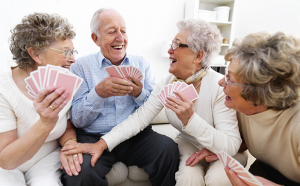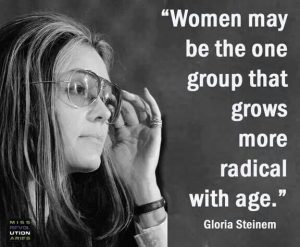Ageism is prejudice or discrimination on the basis of a person’s age. It is stereotyping and discriminating against individuals or groups on the basis of their age in terms of their working capacity, spending capacity or buying aptitude. At times it appears casual and at times very systematic. The term was coined in 1969 by Robert Neil Butler to describe discrimination against seniors, which was patterned on sexism and racism. Butler defined “ageism” as a combination of three connected elements namely prejudicial attitudes towards older people, old age, and the aging process; discriminatory practices against older people; and institutional practices and policies that disseminate stereotypes about elderly people.
Age catches up with all of us, but in the marketing profession it catches up a bit too faster than anywhere else. Age is experience. Age is the time period a person or thing has survived till date. Age is a sign of survival. It is said that age brings wisdom. Age brings knowledge. But, the fact is age is just a number in our minds.
Every phase of life is important; one should experience each phase in life. Every age has its own essence. Be it a 1 year old child, 16 years old teenager, 35 years old man or a 90 years old man. We see different behaviours in people at different ages. Different marketers offer different interpretations of age. Jan Gooding, Global Inclusion Director at Aviva Insurance, believes that age discrimination has always been acute in advertising agencies; it might be lesser in client marketing departments. She recalls her own experience of facing age discrimination in her mid-40s when, having run her own consultancy and worked as head of strategic communications at BT (British Telecommunications) for three years, she considered returning to agency management.
Disparity in employing older people: Behaviour is the way one conducts himself; it is the way one behaves. One’s behaviour is influenced by several factors like health, mentality, surroundings, society, culture, tradition and age is of course one of the parameters among others. We see 76 years old behaving more chirpy and happy than 36 years old. Therefore disparity in employing older people is certainly not rational. This disparity in employing older people varies sector by sector. But, we see great discrepancy in the beauty sector, where 44% of marketers feel older people are either under-represented or not represented.
While young people have boundless energy and they offer a certain valuable perspective to a business, we also see that most people improve with age, and have decades of experience and wisdom that can’t be matched by someone few months or few years out of college. I would love to give an example of feminist icon Gloria Steinem. At 80 plus years, which is practically considered dead by Silicon Valley employers, Steinem dint withered away since her activist days in the ’70s. In fact, according to her friend and fellow activist Robin Morgan, she is more effective than ever. “She is a better organizer now than she ever has been. She’s a better persuader. She’s a better writer than she ever has been if she’d give herself the time to sit down and write,” Morgan told the New York Times recently. Throughout her life as a public figure, Steinem has continued to reshape the way people view aging, pushing back against the misguided ageism in American culture. At 40, she famously came out, so to speak, telling a reporter “This is what 40 looks like.” At the time, it was common for women over 30 to lie about their age. Since, she has stormed into each new decade proudly, and claims to love getting older. In her own words fifty was a shock, because it was the end of the centre period of life. But when she turned 60 she looked and behaved great. Seventy was greater. She has always loved aging. Her mantra is “we don’t have anything permanent, so go on with life” If anything changers periodically, it is our age.
The number of 60 plus older is growing in developed and developing nations all over the world. But as a society we are still are not ready to embrace the aging population, gereopsychologists (psychologists who work with old age related problems) say that those who are 60 or older may all too often find themselves the victims of ageism. In fact, in a survey of 84 people ages 60 and older, nearly 80 percent of respondents reported experiencing ageism–such as other people assuming they had memory or physical impairments due to their age, which is not true at all.
Message to marketers: Need is necessity. There is a very slim line of difference between need and want; needs describe basic human requirements such as food, air, water, clothing and shelter. But, people also have strong needs for recreation, education, and entertainment. These needs become wants when they are directed to specific objects that might satisfy the need. Need recognition is the basic step in the buying process. Every age has a different list of needs. It depends on an individual’s age to decide whether a product is a need or not. This process of need recognition is greatly influenced by the age factor of the buyers.
But, we see 60-70 years old guys buying products and services enjoyed by teenagers. In terms of their general behaviour, seniors tend toward seasonal migration to warm climates and to earlier bedtimes. Two distinct sub segments seem to exist–the “young old,” aged to 74, and the “old-old,” those 75 and above. The young-old are active, vibrant, and healthy. The old-old are less healthy, more sedentary, and less sharp in their mental and physical abilities. There are twice as many young-olds as there are old-olds. The elderly increasingly exhibit a trend toward “gray pride” which is a positive identification with their age and away from the negative stereo-type as ’poor’, ‘depressed’, ‘physically deteriorated’, and ‘inactive’. Perhaps the most impressive difference between oldsters and younger age groups is the combination of flexible time and money. The purchasing power of this segment has been estimated at between $60 and $200 billion. So you find them everywhere – night clubs, dance floors, yachting, paragliding, jungle safaris, playing tennis and cricket. They like to buy flashy clothes, variety of foods and beverages. They like to go driving, shopping movies etc. Lets the marketers not use the older demographic notion of buying behaviour.
The world is experiencing an exceptional increase in average life expectancy and population aging, described as a revolution in longevity. In the twentieth century, the industrialized world gained some 30-40 additional years of life, greater than had been attained during the preceding 5,000 years of human history and transforming what was once the experience of the few to the destiny of many. It is time that marketers must realise that they must discard ageism from their dictionary. The so called “aged” population is economically liberal, knowledge, maintains good health and most importantly, is ready to ENJOY life.















































